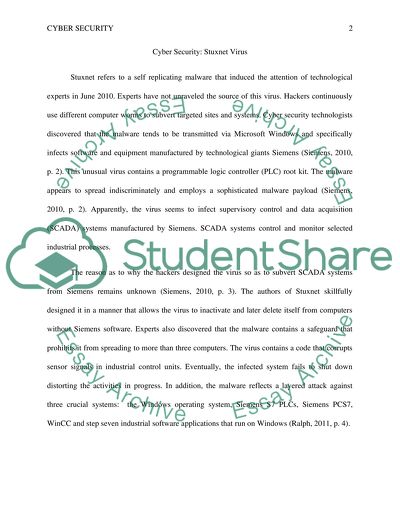Cite this document
(“Cyber Security: Stuxnet Virus Attack Research Paper”, n.d.)
Cyber Security: Stuxnet Virus Attack Research Paper. Retrieved from https://studentshare.org/information-technology/1442434-stuxtnet-virus
Cyber Security: Stuxnet Virus Attack Research Paper. Retrieved from https://studentshare.org/information-technology/1442434-stuxtnet-virus
(Cyber Security: Stuxnet Virus Attack Research Paper)
Cyber Security: Stuxnet Virus Attack Research Paper. https://studentshare.org/information-technology/1442434-stuxtnet-virus.
Cyber Security: Stuxnet Virus Attack Research Paper. https://studentshare.org/information-technology/1442434-stuxtnet-virus.
“Cyber Security: Stuxnet Virus Attack Research Paper”, n.d. https://studentshare.org/information-technology/1442434-stuxtnet-virus.


